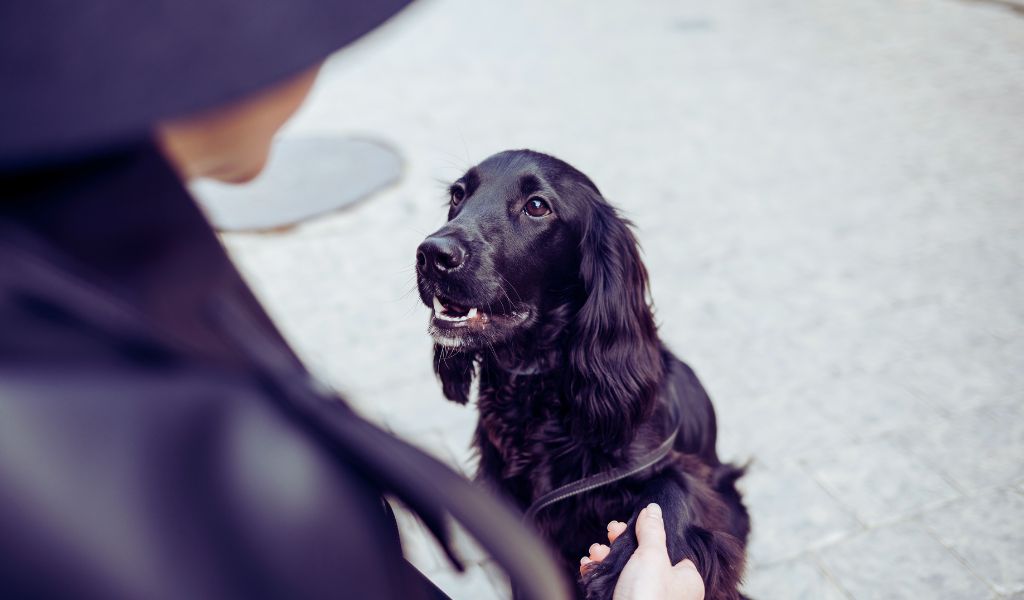One distinctive feature of Cocker spaniels that often catches the eye is their disproportionately large paws.
This characteristic has led to questions about its origin and significance.
In this blog post, we will delve into the reasons behind the large paws of Cocker spaniels, exploring their history, genetics, and the practical implications of this trait.
Cocker Spaniels have big paws primarily due to their history as working dogs. Large paws provide better traction, stability, and swimming efficiency, which are essential for navigating various terrains and retrieving game from water. This trait, shaped by selective breeding, enhances their agility and performance in the field, making them effective and versatile companions.
The History and Evolution of Cocker Spaniels
Origins of the Breed
The breed’s history dates back several centuries, with references to spaniel-type dogs found in historical texts as early as the 14th century.
The name “Cocker” is derived from their use in hunting Woodcock, a game bird.
Over time, the breed was refined to enhance their hunting abilities, including their endurance, agility, and sensory perception.
Evolutionary Adaptations
The development of large paws in Cocker spaniels can be attributed to evolutionary adaptations necessary for their role as hunting dogs.
Large paws provide several advantages in the field:
- Traction and Stability: Bigger paws offer greater surface area, improving traction and stability on various terrains, from muddy grounds to dense underbrush.
- Swimming Efficiency: Spaniels are known for their ability to retrieve game from water. Larger paws act like paddles, enhancing their swimming capabilities.
- Digging and Burrowing: Hunting often involves digging and burrowing to flush out prey. Larger paws facilitate these actions, making the dogs more effective hunters.

Genetic Factors Influencing Paw Size
Inherited Traits
The size of a Cocker spaniel’s paws is largely determined by genetics.
Breeding practices over generations have emphasized certain traits, including paw size, to optimise the breed’s hunting skill.
These inherited traits are passed down through selective breeding, ensuring that future generations maintain the characteristics desirable for hunting and retrieving.
The Role of Selective Breeding
Selective breeding has played a significant role in shaping the physical attributes of Cocker spaniels.
Breeders have focused on enhancing traits that contribute to the breed’s functionality and performance.
This includes not only paw size but also overall body structure, coat type, and sensory abilities.
Practical Implications of Large Paws
Enhanced Mobility and Agility
One of the primary benefits of large paws in Cocker Spaniels is enhanced mobility and agility.
Whether navigating through dense forests, running across open fields, or swimming in lakes, larger paws provide better support and balance.
This enables the dogs to move swiftly and efficiently, a crucial attribute for hunting dogs.
Protection and Durability
Large paws also offer protection and durability, which are essential for dogs that spend significant time outdoors.
The increased surface area distributes the dog’s weight more evenly, reducing the pressure on individual paw pads and minimising the risk of injuries.
Additionally, the robust structure of larger paws can better withstand rough and uneven terrain, providing a natural defence against cuts, bruises, and other injuries.
Grooming and Maintenance
While large paws offer many advantages, they also require proper grooming and maintenance.
The fur between the paw pads can become matted and tangled, leading to discomfort and potential health issues.
Regular grooming, including trimming the fur and cleaning the paws, is essential to keep them healthy and functional.
This article about looking after your spaniel’s paws goes into greater detail.
Common Health Concerns Related to Paw Size
Joint and Bone Health
Cocker spaniels, like many other breeds, can be prone to joint and bone issues, particularly as they age.
The weight distribution provided by larger paws can help alleviate some of the stress on joints, potentially reducing the risk of conditions such as arthritis.
However, it is still crucial for owners to monitor their dog’s joint health and provide appropriate care and supplements as needed.
Paw Injuries
Despite their durability, large paws are not immune to injuries.
Cuts, abrasions, and infections can occur, especially in active dogs that spend a lot of time outdoors.
Regular inspection of the paws for any signs of injury or infection is important, along with prompt treatment to prevent complications.
Frequently Asked Questions (FAQs)
Why do Cocker spaniels have big paws?
Cocker spaniels have big paws primarily due to their history as hunting dogs. Large paws provide better traction, stability, and swimming efficiency, which are essential for hunting and retrieving game.
Are large paws common in all spaniel breeds?
While large paws are a characteristic of Cocker, other spaniel breeds may also have relatively large paws. However, the size can vary depending on the specific breed and their intended role in hunting or other activities.
Do large paws indicate that a Cocker spaniel will be a good swimmer?
Yes, larger paws can enhance a Cocker spaniel’s swimming abilities by acting like paddles and providing better propulsion in the water. This trait is particularly beneficial for retrieving game from bodies of water.
How should I care for my Cocker spaniel’s paws?
Regular grooming and maintenance are essential for keeping your Cocker spaniel’s paws healthy. This includes trimming the fur between the paw pads, cleaning the paws regularly, and inspecting them for any signs of injury or infection.
Can large paws lead to health problems in Cocker spaniels?
While large paws themselves are not typically a direct cause of health problems, they can be prone to injuries if not properly cared for. Additionally, joint and bone health should be monitored, as larger paws can contribute to better weight distribution and potentially reduce joint stress.
Do all Cocker spaniels have large paws?
Most Cocker spaniels have larger-than-average paws due to their breeding history and genetic traits. However, individual variations can occur, and some dogs may have slightly smaller paws compared to others in the breed.
Is there a difference in paw size between American and English Cocker spaniels?
There can be slight differences in paw size between American and English Cocker spaniels, as each type has been bred with specific traits in mind. Generally, both types have relatively large paws, but the exact size can vary based on individual breeding lines and standards.
How can I prevent paw injuries in my Cocker spaniel?
To prevent paw injuries, regularly inspect your dog’s paws for cuts, abrasions, or signs of infection. Keep the fur between the paw pads trimmed and clean the paws after outdoor activities. Providing a balanced diet and joint supplements can also support overall paw and joint health.
Do larger paws affect a Cocker spaniel’s gait?
Larger paws can contribute to a more stable and balanced gait, which is beneficial for agility and mobility. This trait helps Cocker spaniels move efficiently over various terrains, making them excellent companions for people that need an active dog.

